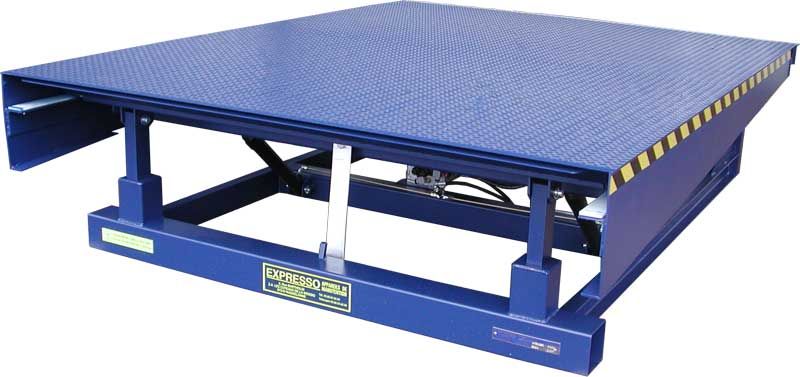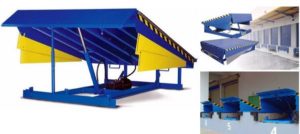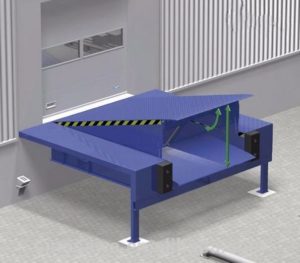Products

Dock Levellers Loading Bays: In a loading dock, one problem to overcome is the problem of bridging the gap between a truck and the dock or warehouse floor.Dock Levellers Loading Bays: Not all trucks are the same height, and the height of the trailer floor within a truck can vary according to how heavily the truck is laden. Thus there is not only a gap to bridge but a height difference to overcome. Various devices are employed in order to achieve this: dock plates, dock levellers, dock boards, and various forms of lift These devices vary in construction, suitability to dock conditions, cost of installation, and loading capacity.
Dock levellers and lifts are generally permanent fixtures at each door of a dock. Dock plates and dock boards are generally, by contrast, portable, and not fixed either to dock or truck.
Dock plates and dock boards are simply metal ramps, bridging the gaps between dock and truck.
Dock plates are generally made out of aluminum whilst dock boards are generally made out of steel.
Aluminium dock plates are thus more suitable for lighter loads, such as handcarts and dollies, whereas steel dock boards are more suitable for heavier motorized equipment such as fork lift trucks and electric pallet trucks. Another difference between dock plates and dock boards, in addition to their load-bearing capabilities, is their construction. Dock plates are simple flat plates, whereas dock boards have curbs, bolted or welded to the edge of the board.
Run-off is prevented by a simple painted yellow strip along the edge of a dock plate, whereas it is the curbs (also generally painted yellow) that prevent run-off on dock boards; these curbs are also where the higher weight capacities of dock boards come from. Run-off is thus a significant risk on dock plates, since the yellow strip is not a particularly effective mechanism for preventing it.





